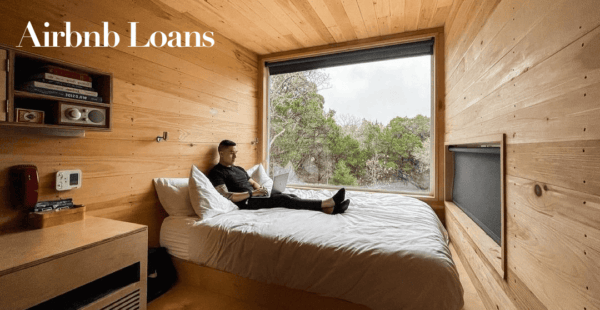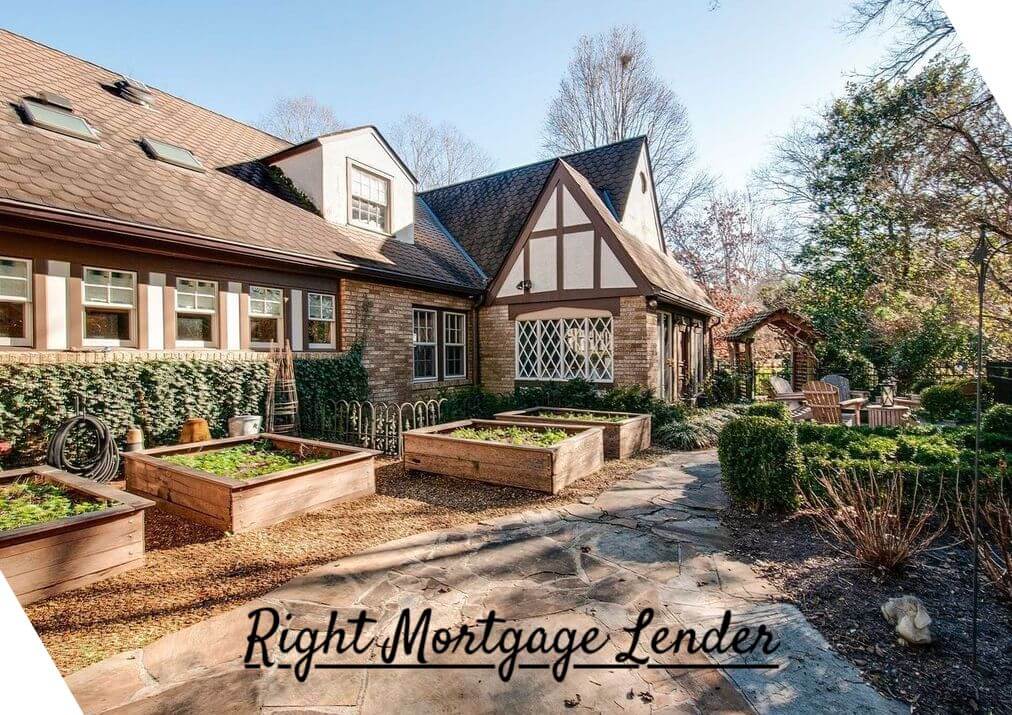Hard Money Loan Types

There are many different types of loans available on the market, but when it comes to South Florida real estate, a hard money loan might not come across as the most obvious or primary option. These loans are not as straightforward as traditional mortgages, but they offer more flexibility and allow most people to get the funds they need to purchase the property they desire. And this is possible even when the borrower’s situation changes.
A hard money loan can be refinanced to be replaced with one with better rates. In this case, the loan can be cleared without any prepayment penalties in most cases. So what are hard money loans, and why are they such a popular loan choice in South Florida? Keep reading to find out.
1. Transactional Loans
Transactional loans are a type of hard money loan that’s used for short-term financing needs like the purchase of property, the renovation of a property, or any other short-term financial need. Because transactional loans are considered hard money loans, they come with higher interest rates than traditional mortgages.
But as they are such short-term loans, the borrower won’t have to pay as much in interest over time and the property title or recorded deed won’t get compromised.
Benefits of Transactional Loans
- No owner’s equity required: You can close on a property without using your own money by utilizing the loan funds.
- Competitive edge: You may have a competitive edge over other buyers.
- Not credit score dependent: It’s important to remember that your credit score has nothing to do with whether or not you’ll be approved for a transactional loan. Your property purchase contracts will determine whether or not you’re approved.
2. Bridge Loans
Bridge loans are another type of hard money loan used for short-term financing, such as buying a property, fixing it up, and then selling it for a profit or refinancing it into a traditional mortgage. Bridge loans are often used by investors looking to take advantage of a hot market.
For commercial purposes, a bridge loan can be used to finance the purchase of a property and then lease it out until the market improves and the property can be sold for a profit.
In terms of residential purposes, a bridge loan can be used to finance the purchase of a fixer-upper and then either sell it or refinance it into a traditional mortgage once the repairs have been made.
Benefits of Bridge loans
- No prepayment needed: Bridge loans don’t require the borrower to make any prepayment. This means that if the borrower decides to refinance the loan or sell the property, they won’t have to pay any additional fees. A bridge loan usually has higher interest rates, but the fact that the loan is paid back in a few weeks or months means that the interest rate is lower and the loan is affordable. You won’t have to worry about increasing interest rates or monthly payments.
- Relaxed lending criteria: Banks have very strict lending criteria, but bridge lenders are more relaxed. This means that you may be able to get a loan even if you don’t have the perfect credit score or income.
- Flexible repayment terms: Bridge loans offer flexible repayment terms, which means that you can choose how long you want to repay the loan. It’s different from a traditional mortgage, where you are locked into a 30-year repayment plan.
- Low fees and interest rates: Bridge loans have low fees and interest rates, which makes them a more affordable option than traditional mortgages.
3. Fix and Flip Loans
Fix and flip loans are also a hard money loan type typically used for the purchase and renovation of a property. The borrower then sells the property for a profit. Fix and flip loans are a popular choice for investors who are looking to take advantage of the hot housing market. Also, they allow investors to renovate an outdated or unattractive property and recoup their money via selling it.
Benefits of Fix and Flip Loans
- Fast approval: Fix and flip loans are typically approved within a week, which is much faster than traditional mortgages.
- Control your buyer’s mortgage rate: You can offer a potential buyer a lower mortgage rate than what’s available on the market, which makes your property more attractive.
- Easier to qualify: Fix and flip loans are easier to qualify for than the usual mortgages. The reason is that the loan is based on the property’s after-repair value, not on your credit score or monthly income.
- High loan amount: You can borrow up to 90% of the after-repair value of the property, which means you can finance the entire purchase and renovation of the property.
4. Cash-Out Refinance
These types of hard money loans are used to borrow against the equity in a property that has been purchased with a normal mortgage. The borrower then uses the cash to pay off the original mortgage, and any remaining funds can be used for other purposes. Also, cash-out refinance loans are a popular choice for investors who are looking to take advantage of the equity in their property.
For a regular cash-out refinance loan, you may borrow up to 80% of the value of your property. The percentage lenders use to describe this figure is known as your “loan-to-value ratio,” or LTV. Remember that to calculate how much money you can take out as cash, and you must deduct the present amount you owe on your mortgage.
Benefits of Cash-Out Refinance Loans
- Low-interest rates: It’s possible to borrow a significant sum of money at a low-interest rate.
- Tax-deductible: Your mortgage interest may be tax-deductible, depending on your specific situation.
- Cheaper: It might be the most cost-effective form of borrowing money.
5. Rental Loans
A rental loan is used to buy and renovate a property that’ll be rented out to tenants. The loan can be used to purchase a single-family home, a multi-family home, or an investment property. Most lenders will want the rental income to be at least 125% of monthly mortgage payments (on an interest-only basis), or even 145%, depending on the criteria set for such a loan.
Benefits of Rental Loans
- Better control: With a smaller investment, you may get almost complete control of the loan and payments.
- Growth in revenue: Rental loans offer you a quick way to increase your property value and income streams.
- Flexibility in rates: You can often choose from various repayment rates, depending on the market and your needs.
6. Airbnb Loans

Airbnb loans can be a perfect way to buy and renovate a property that will be used as an Airbnb accommodation. Whether it’s a single property unit or multi-property unit, or even as an investment, an Airbnb loan can be a great option. If you’re buying a home with the goal of renting it out, regardless if it’s on Airbnb or not, a buy-to-let mortgage (BTL) is often the most suitable form of financing.
Benefits of Airbnb Loans
- More revenue: Airbnb loans can generate higher rental yields.
- Offset tax: Mortgage interest is now deemed to be a business expense, which can be used to offset against taxes rather than the recent adjustments in traditional buy-to-let taxation.
- Flexibility: There are now a number of lenders offering Airbnb loans, which gives you more choice and flexibility.
7. Foreigner Loans
Foreigner loans, also known as overseas mortgages, are specifically designed for non-US citizens. A foreigner loan aims to provide non-US citizens with the funds they need to purchase a property in the United States.
If you’re in a country where the US Dollar is stronger than your home currency, buying real estate abroad is more than likely to be more costly as opposed to purchasing property in your region. This is because when you convert your home currency to US dollars, you’ll get less money out of the deal.
As a result, you’ll need to take out a loan to make the purchase. The amount that you can borrow and the interest rate will be based on a number of factors, including your credit score, employment history, and annual income.
Benefits of Foreigner Loans
- No extra costs: If the borrower wants to sell the asset or refinance the loan, there are no prepayments or other fees.
- Flexible: Loans for non-resident investors are quite flexible in nature. Buying real estate in the US is a possibility and can be done without any hassle.
- Non-US citizens can qualify: One of the main benefits of foreigner loans is that non-US citizens can qualify for the loan. This makes it an attractive option for those who are abroad to own real estate in the US.
8. Residential Rehab Loans
Residential rehab loans are specifically designed to renovate and rehabilitate residential properties. The funds from the loan can be used for repairing and updating a property, adding new features, or even making cosmetic changes. In addition to this, the funds can also be used for the purchase of a new home.
A buyer who executes a buy-and-rehab strategy may quickly obtain a substantial amount of equity. Houses that require repair or upgrades may be purchased at a low price, and the repairs will only take a couple of weeks. Although, it’s important to note that the interest rates for these types of loans are generally higher than traditional mortgage loans.
The main reason for this is that the risks associated with these loans are also higher. Another thing to keep in mind is that most lenders will only finance up to 70% of the after-repair value (ARV) of the property, meaning that you’ll need to have at least 30% of the ARV in cash to qualify for the loan.
For example, if a property is worth $100,000 after it has been repaired, the maximum loan amount that a lender will give you is $70,000. This leaves you with a $30,000 down payment. While this may seem like a lot of money, it’s important to remember that the equity in the property can be used as collateral for the loan. So if you default on the loan, the lender can take hold of the property and sell it to recoup their losses.
The bottom line is that residential rehab loans are a great way to finance the purchase and renovation of a property, but they come with a higher degree of risk. Before taking out one of these loans, do your homework and understand the risks involved.
Benefits of Residential Rehab Loans
- One payment: One monthly payment for both mortgage and construction expenses is possible.
- Future value: The amount of the mortgage is determined by the home’s future value after it has been renovated.
- Get the funds you need: One of the main benefits of a residential rehab loan is that it can provide the borrower with the necessary cash to make the changes they desire.
9. New Construction Loans

New construction loans are created for those who are looking to build a new property. The funds from the loan can be used for the purchase of land, the construction of a new home, or even the renovation of an existing property.
The major distinction between a traditional mortgage and a construction loan is that construction loans are short-term, typically no longer than a year. They’re generally interest-only payments based on the amount you’ve advanced so far. Mortgages are long-term, and the funds arrive in a single lump sum. The payments are usually made up of both principal and interest.
Benefits of New Construction Loans
- The ability to finance the entire project: New construction loans can be used to finance an entire project, from the acquisition of land to the building of the home. So, it can be a great option for those who are looking to build their dream home.
- Access to larger amounts: New construction loans can provide borrowers with access to larger loan amounts than traditional mortgages. They’re short-term loans, and the lender is using the property’s value as collateral.
- Flexible repayment terms: New construction loans also offer flexible repayment terms. You can choose how long you have to repay the loan.
- Pay only the interest during construction: With a new construction loan, you only have to pay the interest on the loan during the construction phase. It can be a great way to save money on the overall cost of the loan.
Conclusion
There are various hard money loan types available to South Florida home buyers. These loans offer flexibility and the ability to get the funds you need for your project. Whether you’re looking to buy a new property or renovate an existing one, there’s a hard money loan that will work for you. Be sure to research all your options and find the best loan for your needs.



